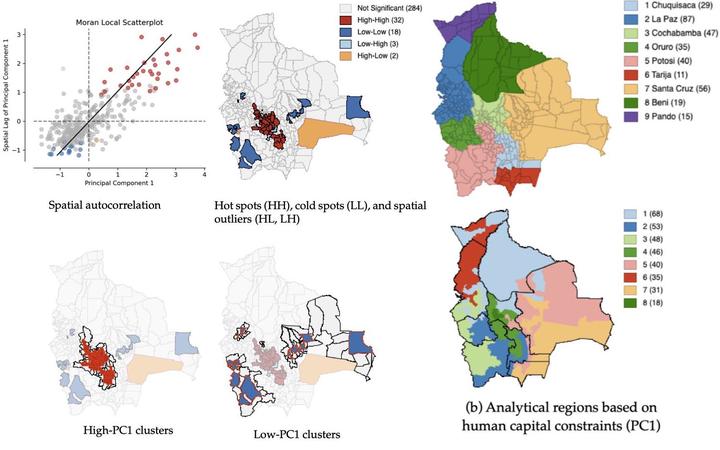Using a novel municipal-level dataset and spatial clustering methods, this article studies the distribution of human capital constraints across 339 municipalities in Bolivia. In particular, the spatial distribution of five human capital constraints are evaluated: chronic malnutrition in children, non-Spanish speaking population, secondary dropout rate of males, secondary dropout rates of females, and the inequality of years of education. Through the lens of both spatial dependence and regionalization frameworks, the municipalities of Bolivia are endogenously classified according to both their level of human capital constraints and their locational similarity. Results from the spatial dependence analysis indicate the location of hotspots (high-value clusters), coldspots (low-value clusters), and spatial outliers for each of the previously listed constraints. Results from the regionalization analysis indicate that Bolivia can be regionalized into six to seven geographical locations that face similar constraints in the accumulation of human capital. The article concludes by highlighting the usefulness of spatial data analysis for designing and monitoring human development goals.
